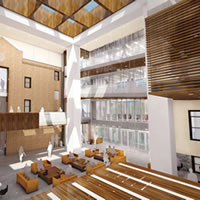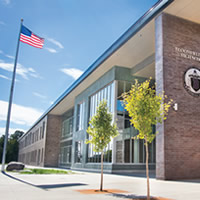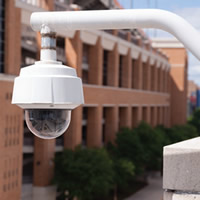
Planning and flexibility are key when developing digital resources for informing your campus population of news, opportunities and events.

Signs and the emerging graphics movement in schools.

American University's new Washington College of Law complex consists of a dramatic collection of spaces centered on a great atrium that unifies a series of interconnected buildings.

Balancing pedagogy, technology and space is key to creating innovative learning facilities.

Playgrounds, gardens and outdoor classrooms are gaining in features and uses.

Campus landscapes can have an integrated role in education and research. At the University of Wisconsin–Madison, a living-learning laboratory -- The Lakeshore Nature Preserve — has successfully evolved in partnership with the greater campus community.

Conflicting narratives make campus policing difficult. Three schools talk about high-touch practices that keep their schools safer.

How The Department of General Services used a non-profit service provider to assist in monitoring and verification of school repairs during a short timeframe.

Terrorists do attack K-12 schools, and you need to plan a response just in case your school comes under attack.

Making the move from library to media center.

Encouraging the exchange of knowledge in informal as well as formal gathering places is redefining and shaping the physical spaces in which teachers teach and students learn.

Bloomfield Hills Schools administrators have built a learning ecosystem that includes three learning ecosystem elements — flexible furnishings, engaging technologies and collaborative spaces.

With new safety and security technologies emerging at a rapid pace, campus police departments have an almost limitless selection to utilize in their quest for safety. Here are what some of the most effective campus police forces have found to work best.

Attention to a college or university's signature "look" should include outside features and furnishings. Outdoor spaces, their design, and what you put into them are vital elements of your institution's brand and mission.

The effective use of security technologies in schools.

School exteriors are no longer an afterthought, but important in many ways.

On all corners of a campus, facility managers must pick and choose where to put resources to protect physical assets. Three professionals speak up about how they keep everything looking great while staying on budget.

While technology in itself does not create learning collaboration, the presence and access to technology is at the core of collaborative partnerships in education today.

The impact of media and technology on learning spaces continues to evolve. In St. Louis, these cutting-edge spaces are fostering creativity and learning.

University of Central Florida administrators are constructing a new facility designed to meet the needs of international students, driven by an intentional goal to increase enrollment.